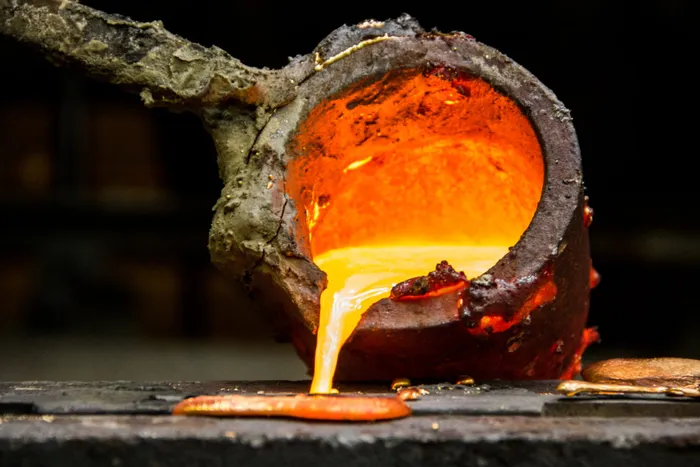Gold soars past $4 100 as investors reap gains despite South Africa’s output decline
GOLD PRICES

SA’s gold production slumped by 3.6% year-on-year in August, marking the second consecutive monthly decline, but gold prices have rallied to levels around $4 141 per ounce despite a stronger dollar amid a looming trade war with China, a government shutdown in the US and global economic growth uncertainty.
Image: Supplied
Tawanda Karombo
Gold prices have continued their record-breaking rally, driven by sustained buying from central banks and exchange-traded funds (ETFs), even as South Africa’s domestic gold output continues to shrink under rising production costs and regulatory pressures.
Data from StatsSA on Tuesday showed SA’s gold production slumping by 3.6% year-on-year in August, marking the second consecutive monthly decline following a 0.4% drop in the previous month.
However, gold prices have rallied to levels around $4 141 per ounce despite a stronger dollar amid a looming trade war with China, a government shutdown in the US and global economic growth uncertainty.
John Meyer, an analyst with UK-based advisory firm SP Angel, said on Tuesday that gold prices have “pressed higher again, climbing past record highs on sustained buying from ETFs and central bank” buying.
“The move higher (moves in gold prices) have paralleled a stronger dollar, highlighting the sustained appetite for gold. Markets are looking to the US’ reception to China’s escalation, with gold benefitting from a further haven bid, despite cooling geopolitical tensions in the Middle East,” wrote Meyer and other analysts at SP Angel in a note to clients.
Greg Davies, the head of wealth at Cratos Capital, noted that bullion prices have soared over 50% over the year-to-date period, smashing through $4 000/oz for the first time ever in the past few days.
This represents the “strongest run since 1979—driven by record demand, global risks, and central bank” buying, he explained.
Yet, South African investors are likely to largely miss out on the boon, with the country “no longer the world’s top gold producer, since most of the gold has been mined out after 150 years” and what remains is kilometres deep and costly to extract, noted Izak Odendaal, Old Mutual Wealth investment strategist.
Moreover, the mining climate in South Africa has become very difficult due to regulatory red tape, sky-high electricity prices, poor transport infrastructure and increasingly, illegal mining.
Furthermore, exploration activity has declined which means that output of gold will likely not increase any time soon.
Some solace though is that those with exposure to local and international gold stocks will likely be rewarded through dividends and increased profitability.
Odendaal also reckons that while the South African economy, financial market and exchange rate are less influenced by the gold price and mining in general than in the 1980s, the rise in the gold price is still significant, especially when platinum miners are taken into consideration.
“The JSE has boomed this year, with the All Share Index topping 100 000 points for the first time on the way to a 34% year-to-date return. This is helped along by an echo-boom in platinum group metals prices. Platinum is not a replacement for gold but can be a substitute in some contexts, and the price is up 74% this year,” said Odendaal.
The future, at least for now, looks glittering for gold and PGM investors but could have been brighter with robust local product of the precious metal.
According to Odendaal though, PGM and gold miners “don’t necessarily need metals prices to keep rising” to remain profitable.
“If prices remain relatively stable at elevated levels, shareholders will be smiling. The taxman will also smile, and so indirectly the gold boom is good for bonds by reducing the South African government’s borrowing requirement somewhat,” said Odendaal.
This is because bonds and other interest rate-sensitive assets benefit from a stronger currency. The rand has appreciated as the country’s terms-of-trade - export prices relative to import prices – and improved with higher precious metals prices and cheaper oil, yielding some wins all round.
BUSINESS REPORT